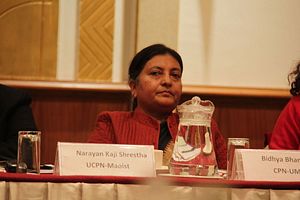“In politics, if you want anything said ask a man, if you want anything done ask a woman.”
—Margaret Thatcher
Although inequalities and special treatment for the privileged persist as a widespread and divisive issue in South Asian countries, the constitutions of the member states of the South Asia Association for Regional Cooperation (SAARC) include a host of measures to abolish all forms of gender disparities, to create mechanisms of enforcement, and to enact policy to combat discrimination against the vulnerable groups of societies in government spheres, the workplace, and education.
Various legislative acts formally abolish inequalities on the grounds of sex, prohibit gender discrimination, and expand the system of reservations for women. In addition, the South Asian constitutions have enacted a number of provisions in response to pressure from disadvantaged groups, increasing protections and expanding reservations systems. As a result, small but significant gains have been made; a slight percentage of women have been benefited from educational opportunities, become wealthier, and risen to high government positions. Yet for many, George Orwell’s words — all are equal but some are more equal than others — are still relevant.
The newly enforced constitution of Nepal was heavily criticized for not addressing the concerns of Madhesis and not allowing women to confer citizenship onto their children. However, the charter does include positive elements for the mainstreaming of women in all spheres, making it more progressive than the constitutions of Nepal’s regional neighbors.
The cornerstones are set by two arrangements in particular. First, the constitution from the very initial stage ensures the rights of women as a fundamental right (FR) under Article 38. This is already a step ahead of many other constitutions, including those in South Asia.
Second, Nepal reserves for women 33 percent of positions in all of Nepal’s state institutions, including the legislature, under Article 84(8). This is a major breakthrough on an arrangement other South Asian states, including India, have also been discussing.
India has been considering adopting a similar constitutional amendment since 1996. The 18-year journey of the Women’s Reservation Bill, which is still pending in the Lok Sabha (Lower House), was marked by high drama during parliamentary discussions last year. India still has a long way to go to ensure the reservation of one-third of seats for women in legislative bodies due to the lackadaisical attitude of the major parties represented in the parliament.
However, 33 percent of seats are reserved for women in local bodies as per 73rd and 74th constitutional amendments adopted in 1993. Relevant articles provide that one-third of seats shall be reserved for women in gram panchayats (village government organizations), cooperative societies, and municipalities. Over the years, 16 states out of 29 have increased the quota for women from 33 percent to 50 percent. The current government says that enhancing the quotas for women in local bodies and Panchayat Raj bodies are high on its priority list for the winter session of parliament, beginning in November this year. The ministers represented in Narendra Modi’s cabinet have expressed that, though some states have already provided a 50 percent reservation for women in local bodies, the increased quota will be implemented uniformly throughout the country through a constitutional amendment.
Meanwhile, Pakistan, despite claims that the maximum efforts would be made to uplift women, reserves just 17 percent and 15 percent of parliamentary seats for women in the Lower House and Senate, respectively. Similarly, Bangladesh ensures 14 percent of seats for women in parliament.
Afghanistan, after Nepal, reserves the highest number of seats for women in parliament. The 2004 Afghan constitution, under Article 84, ensures that the state shall ensure 27 percent of parliamentary berths in the lower house are held by women, along with 50 percent of seats in the House of Elders.
Bhutan, the smallest country in the region, believes that such a quota system is undemocratic. The 2008 constitution simply provides for a 25-member National Council under Article 11, while Article 12 says there shall be a 55-member National Assembly, with no quota for any section of society. Maldives and Sri Lanka stands on similar footing with Bhutan in rejecting a quota system. These countries believe such quotas would go against constitutional provisions against discrimination on the basis of gender.
Women’s rights activists argue that gender discrimination affects all of society, not just women. And the cause of women cannot be served unless women from underprivileged categories are allowed to raise their concerns in policymaking apparatuses and the parliament, the highest law-making authority of any sovereign country.
The dreams of Convention on Elimination of All Forms of Discrimination Against Women (CEDAW) would not come true unless and until we succeed to end all forms of violence perpetuated on women and ensure the fair representation of women at private, non-private, and governmental spheres. Nepal’s Constitution, which reserves the highest percentage of seats for women of any country in South Asia, is a step in the right direction.
Jivesh Jha is a final year LL.B Nepali student in Dehradun.

































